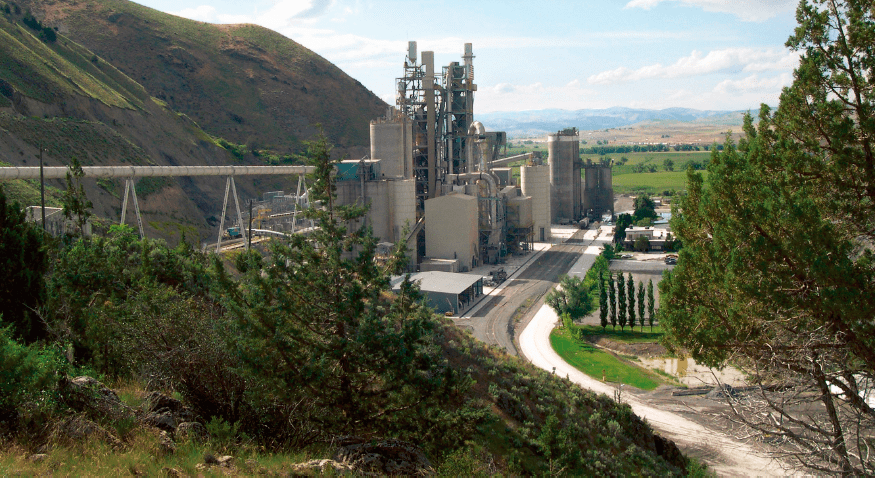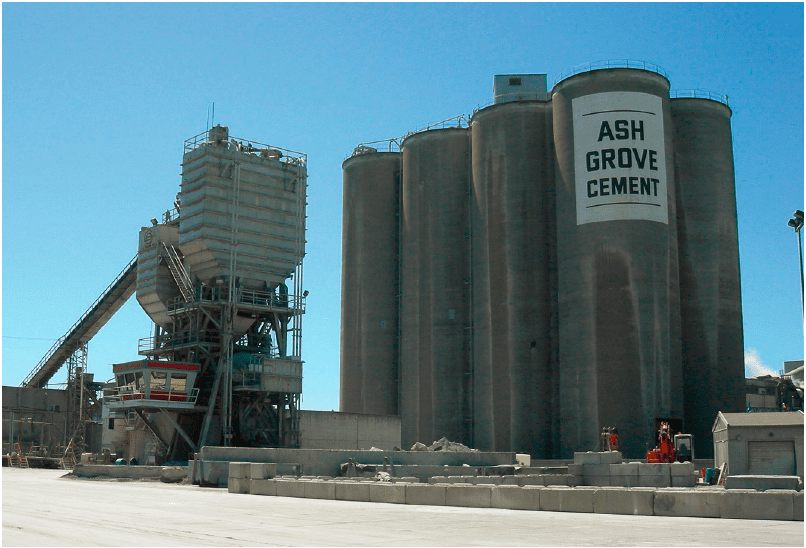Goals
- Automate maintenance data collection at each facility for a well-defined enterprise asset management process to support equipment performance reliability
Challenges
- Improve the availability and utilization balance of production assets and develop a standardized solution for each of its nine separate production facilities, while maintaining production
Results
- A $2 million first year inventory reduction
- Improved ability to manage inventory, as many as 8,000 items at each plant, maintaining between $2 million to $12 million in inventory
- Compliance with the Federal Environmental Protection Agency (EPA) regulation called the Portland Cement Maximum Achievable Control Technology (PC MACT)
- Minimizes the potential loss of $3,000 per hour for every hour the kiln is offline

“By closely monitoring and managing what we use, reorder activities, and parts and materials pricing, we have reduced inventory by at least $2 million in the last few years. This is a significant contribution to keeping our prices competitive in the marketplace.” - Mike Ralls, Plant Systems Administrator
Background
Overland Park, Kansas – Founded in 1882, the Ash Grove Cement Company is the fifth largest cement manufacturer in the United States, with an annual production capacity of more than 8 million tons per year. Company headquarters are in Overland Park, Kansas, with production facilities located throughout the U.S. The Portland and masonry cements produced at these plants are used in the construction of highways, bridges, commercial and industrial complexes, residential homes, and numerous other applications.
Maximizing Profit in a Highly Cost-competitive Market
Cement producers can pretty much sell as much cement as they can make, but maximizing profit in a highly cost-competitive market requires continuous innovation.
Mike Ralls, Plant Systems Administrator, said, “We’re sold out all year long and that’s just the way we want it, but we don’t have the luxury of non-production time. We must continually find better ways to balance both availability and utilization of our production assets.”
This challenge was compounded by having to develop a standardized solution that worked for each of its nine separate production facilities.
As the fifth largest U.S. cement manufacturer, the Ash Grove enterprise includes management, finance, and administration functions at headquarters in Overland Park, Kansas, and autonomous mining, transportation, production, and distribution facilities in nine U.S. states. The scope of the equipment at these facilities ranges from capital expense drilling and excavating systems to motors and power transmission belts. All are in constant use and need regular maintenance.
According to Ryan Farr, Corporate Reliability Manager, “It’s a challenge to schedule maintenance work when you run 24 hours a day, but usually we get a 2-4 week period once a year based on kiln outage.”
While all phases of production are important, the high temperature kiln, which converts calcium,silica, alumina, and iron components into the base “cement clinker” is the heart of the operation. The Ash Grove kilns are large ovens that rotate at about 3.5 RPM and reach temperatures as high as 3000 degrees Fahrenheit.
“If the kiln goes down, we can lose as much as $3,000 an hour, which makes the kiln one of our top maintenance priorities. Typically, the kiln drives our maintenance outages, which gives us a limited window of opportunity to do major overhauls. We need to tightly manage what has to be done, who is going to do it, and what is needed to get the job done most efficiently for ongoing reliable operation,” said Farr.
To make most efficient use of that maintenance window, Ash Grove automated all data collection on kiln-related maintenance activity at one plant and extended it to remaining facilities in the following year.
Ralls explained, “Our long-term goal was to automate maintenance data collection at each of our facilities for a well-defined enterprise asset management process to support equipment performance reliability while interfacing with our financial software, JD Edwards One World. We needed a system that we could implement to improve operations, with the scalability to contribute to sustainable development.”
With the global rollout underway, Ash Grove set out to improve equipment reliability and cost savings further by tapping EAM functionality for enterprise planning and scheduling, document management,regulatory compliance, and inventory management.
“Our original need was maintenance functionality and some cost tracking information, mostly a data capture and get it into the system so we don’t lose it’ type of solution. But when we saw that AVEVA could also help us sort and interpret this data, we were pretty excited,” said Bernard Sherin, Maintenance Manager at the Durkee plant.
Analyze Failure Causes and Histories and Take Action Accordingly
The expanded AVEVA Enterprise Asset Management functionality enables Ash Grove management to share maintenance data from diverse, geographically separated operations, covering several square miles of quarries and the cement production plant. It is a computerized maintenance management system (CMMS) that uses an “entity” concept to enable tracking of cost and maintenance activity. “Parent-child” relationships can be set up easily to build detailed hierarchies for cost rollups and operating statistics.
Sharon McGuire, Planner/Scheduler at the Durkee facility, said, “Following safety, our top priority is minimizing downtime of revenue-producing equipment, so planned outages of this equipment drive our planning. Proper planning gives us more control over the situation, but requires facility-wide coordination, and that is one area where the AVEVA software has proven to be particularly helpful.”
This detailed history of equipment information enables supervisors to analyze failure histories, track failure causes, and take action accordingly. Maintenance parts inventories can be better managed, especially when dealing with large numbers of unique and low-unit-value items that can often be subject to unpredictable demand. Workflow can be better planned and purchasing and procurement functions can be tied directly into planned outage maintenance programs.
The software also supports contingency planning for unanticipated equipment failures. Technicians can review work backlogs easily, adjust work schedules, and determine appropriate maintenance procedures by studying the equipment history. Pre-entered coding helps technicians determine which equipment must be shut down during the maintenance and which can continue running.
To help all maintenance teams stay on top of required maintenance, Ash Grove Cement has an open access policy to relevant information by all AVEVA EAM users throughout the enterprise from maintenance to management. This is particularly useful for managing work requests. For instance, if a guard on a piece of rotating equipment needs to be replaced, the equipment operator can enter a work request from his station. Planners and schedulers in another office will review the work request, schedule the repair, and define the most efficient procedures. The system then generates the work order automatically, and places it in a backlog, for regular review and reprioritization, as needed. The system automatically issues work orders to technicians, who replace the guard and enter details into the system. The system then notifies the operator that the job is complete and to submit a review and comment.
To enhance the scheduling and planning efficiency further, Ash Grove has added the EAM VIP Advanced Scheduling software, which manages availability of all project resources. The VIP software helps schedule maintenance and measures schedule compliance. It enables better employee work utilization and facilitates changes in plans and schedules.
Ash Grove uses EAM VIP in conjunction with handheld personal data assistants (PDAs). Planners download work orders to PDAs, which are given to technicians at the beginning of each day. The work orders can include information on labor, materials, tools, drawings, and any special instructions for the job. Technicians record status electronically during the day and update the central database by docking the PDAs in the evening.
The advanced planning and scheduling software also improves processing of emergency work orders. If technicians encounter situations that can be corrected immediately, without further coordination, they go ahead and do it. For more involved procedures that cannot be handled right then, the technician generates an emergency work order through the PDA, which goes to the planner as a high priority. These are closely monitored, and the planner coordinates with other related departments to determine the most efficient remedy. In addition to improved maintenance efficiency, Ash Grove has benefited from eliminating the cost, inaccuracy, and time consuming aspects of paper processing, including better documentation of all maintenance activities, easier compliance with environmental regulations, and improved inventory management.
Electronic Documentation
The AVEVA Enterprise Asset Management software builds a detailed history of equipment information based on day-to-day maintenance activities. Equipment statistics include hours of operation, cause and frequency of downtime, and labor and material changes, all of which can be easily reviewed and analyzed.
“We can look at historical data and trend it to evaluate whether we need to spend more or less effort in a particular area. It’s given us an easy way to determine whether a particular piece of equipment has had an inordinate amount of work done on it. With proper cost justification, we can judge whether we should replace any equipment that’s costing too much to maintain,” said Farr.
Documenting Environmental Compliance
The Federal Environmental Protection Agency (EPA) regulation called the Portland Cement Maximum Achievable Control Technology (PC MACT) requires all cement plants to follow an approved plan for continuous compliance with environmental regulations and provides for regular monitoring of adherence to that plan.
Farr commented that, “One critical requirement in the PC MACT program is to have preventive maintenance schedules set up and documented, including standard operating procedures that demonstrate that we’ve followed these procedures. We rely on AVEVA to maintain our history of all operations to meet these new requirements.”
This is particularly critical for visible emissions monitoring. Visible emissions can generate complaints, resulting in a visit from Department of Environmental Quality (DEQ) inspectors.
“By law we are required to document these incidents and the inspectors want to see it. They want to know what time the incident occurred, what we did about it, and what time the emissions were abated. AVEVA provides this documentation to validate our actions. Without this, we could face serious fines,” said Farr.
Inventory Management
To help Ash Grove manage procurement, the AVEVA EAM software stores and simplifies retrieval of vendor information such as pricing, lead times, and manufacturers’ cross-references, and uses this data to drive automatic replenishment and tracking of inventory items.
Included with every work order is a list of parts required to complete tasks. Inventory warehouse managers pull parts and have them ready for the technicians. At the same time, AVEVA tracks items coming out of and going into inventory, so purchasing can prepare to replenish these parts most efficiently by researching price, availability, and delivery of these items.
Gains in Inventory Management
Expanding the scope and functionality of the enterprise asset management system has contributed to gains in inventory management, kiln uptime, and overall maintenance costs savings. Inventory management gains are in reduced inventory size.
By increasing kiln usage, Ash Grove Cement minimizes the potential loss of $3,000 per hour for every hour the kiln is offline. Because most maintenance must be done during planned outages, it is critical that all required parts be available for that outage. With the AVEVA EAM planning and scheduling functionality, the system now predicts what parts will be needed at the time of the outage, and automates ordering so that it is there when needed.
